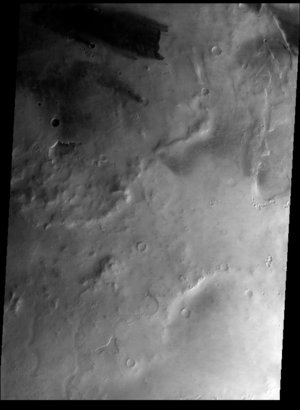Accept all cookies Accept only essential cookies See our Cookie Notice

About ESA
The European Space Agency (ESA) is Europe’s gateway to space. Its mission is to shape the development of Europe’s space capability and ensure that investment in space continues to deliver benefits to the citizens of Europe and the world.
Highlights
ESA - United space in Europe
This is ESA ESA facts Member States & Cooperating States Funding Director General Top management For Member State Delegations European vision European Space Policy ESA & EU Space Councils Responsibility & Sustainability Annual Report Calendar of meetings Corporate newsEstablishments & sites
ESA Headquarters ESA ESTEC ESA ESOC ESA ESRIN ESA EAC ESA ESAC Europe's Spaceport ESA ESEC ESA ECSAT Brussels Office Washington OfficeWorking with ESA
Business with ESA ESA Commercialisation Gateway Law at ESA Careers Cyber resilience at ESA IT at ESA Newsroom Partnerships Merchandising Licence Education Open Space Innovation Platform Integrity and Reporting Administrative Tribunal Health and SafetyMore about ESA
History ESA Historical Archives Exhibitions Publications Art & Culture ESA Merchandise Kids Diversity ESA Brand Centre ESA ChampionsLatest
Space in Member States
Find out more about space activities in our 23 Member States, and understand how ESA works together with their national agencies, institutions and organisations.
Science & Exploration
Exploring our Solar System and unlocking the secrets of the Universe
Go to topicAstronauts
Missions
Juice Euclid Webb Solar Orbiter BepiColombo Gaia ExoMars Cheops Exoplanet missions More missionsActivities
International Space Station Orion service module Gateway Concordia Caves & Pangaea BenefitsLatest
Space Safety
Protecting life and infrastructure on Earth and in orbit
Go to topicAsteroids
Asteroids and Planetary Defence Asteroid danger explained Flyeye telescope: asteroid detection Hera mission: asteroid deflection Near-Earth Object Coordination CentreSpace junk
About space debris Space debris by the numbers Space Environment Report In space refuelling, refurbishing and removingSafety from space
Clean Space ecodesign Zero Debris Technologies Space for Earth Supporting Sustainable DevelopmentLatest
Applications
Using space to benefit citizens and meet future challenges on Earth
Go to topicObserving the Earth
Observing the Earth Future EO Copernicus Meteorology Space for our climate Satellite missionsCommercialisation
ESA Commercialisation Gateway Open Space Innovation Platform Business Incubation ESA Space SolutionsLatest
Enabling & Support
Making space accessible and developing the technologies for the future
Go to topicBuilding missions
Space Engineering and Technology Test centre Laboratories Concurrent Design Facility Preparing for the future Shaping the Future Discovery and Preparation Advanced Concepts TeamSpace transportation
Space Transportation Ariane Vega Space Rider Future space transportation Boost! Europe's Spaceport Launches from Europe's Spaceport from 2012
Ice-coated crater
Thank you for liking
You have already liked this page, you can only like it once!
This view may resemble a snowy scene observed from an airplane flying over Earth’s mountain ranges, but it is in fact a spectacular scene captured by the CaSSIS camera onboard ESA’s ExoMars Trace Gas Orbiter, or TGO, as it flew over the ice-coated Korolev crater on 21 August 2019.
Korolev is an 80 km-wide crater in the northern polar regions of Mars that contains a massive ice sheet in its centre, the third largest exposed ice sheet on Mars, after its polar caps. The beauty of this ice sheet was captured in its entirety in a stunning mosaic of images taken by the HRSC camera on ESA’s Mars Express over the course of its 15-year – and counting – odyssey at the Red Planet.
TGO also captured a beautiful slice of Korolev crater in April 2018, which was one of the first images the spacecraft sent back to Earth after arriving in its science orbit around Mars.
In the image presented here, the CaSSIS camera reveals the detail of the crater’s south-eastern wall, which was illuminated at sunrise during the start of summer in the northern hemisphere. The walls of the craters at this latitude get fewer hours of sunlight on average throughout the year, so they have permanent deposits of water ice. In addition, at this time of year, carbon dioxide ice is still present on the surface left over from the seasonal cap that covers the polar regions during winter, contributing to the appearance of snow-covered mountain peaks.
Compare with this image taken in the same region a few months later, after much of the carbon dioxide ice has receded.
The image is centred at 164.90ºE/72.02ºN and was taken on 21 August 2019. The scale is indicated on the image.
-
CREDIT
ESA/Roscosmos/CaSSIS -
LICENCE
CC BY-SA 3.0 IGO or ESA Standard Licence
(content can be used under either licence)

Receding ice

Ice-filled crater

ExoMars images Korolev Crater

ExoMars images Korolev Crater















 Germany
Germany
 Austria
Austria
 Belgium
Belgium
 Denmark
Denmark
 Spain
Spain
 Estonia
Estonia
 Finland
Finland
 France
France
 Greece
Greece
 Hungary
Hungary
 Ireland
Ireland
 Italy
Italy
 Luxembourg
Luxembourg
 Norway
Norway
 The Netherlands
The Netherlands
 Poland
Poland
 Portugal
Portugal
 Czechia
Czechia
 Romania
Romania
 United Kingdom
United Kingdom
 Slovenia
Slovenia
 Sweden
Sweden
 Switzerland
Switzerland

























